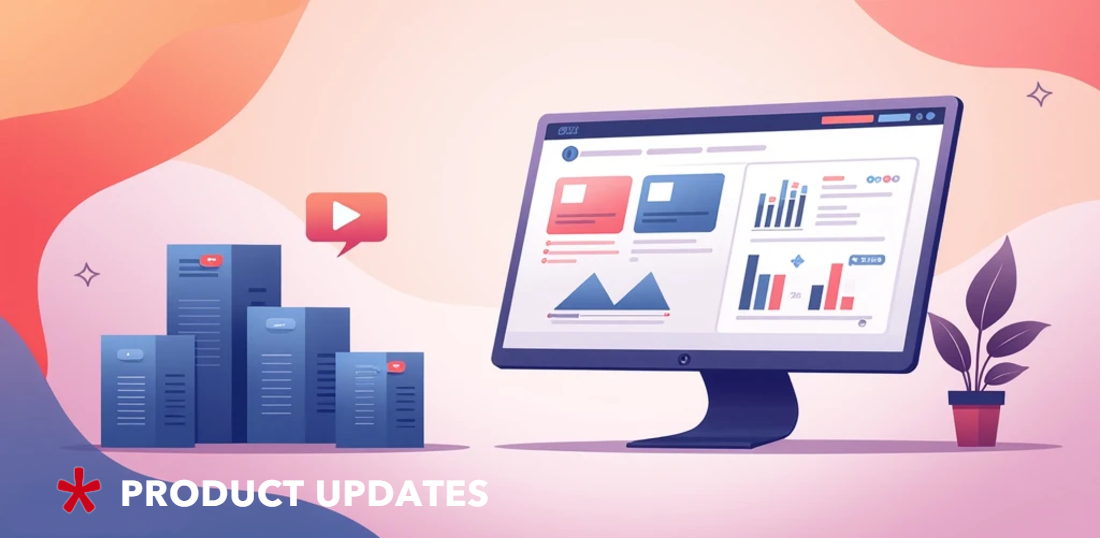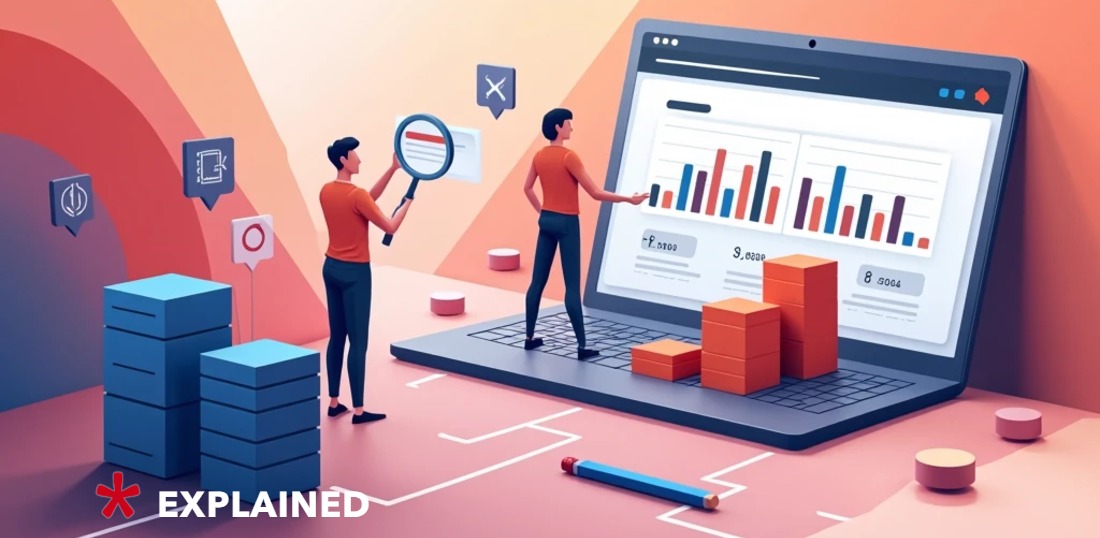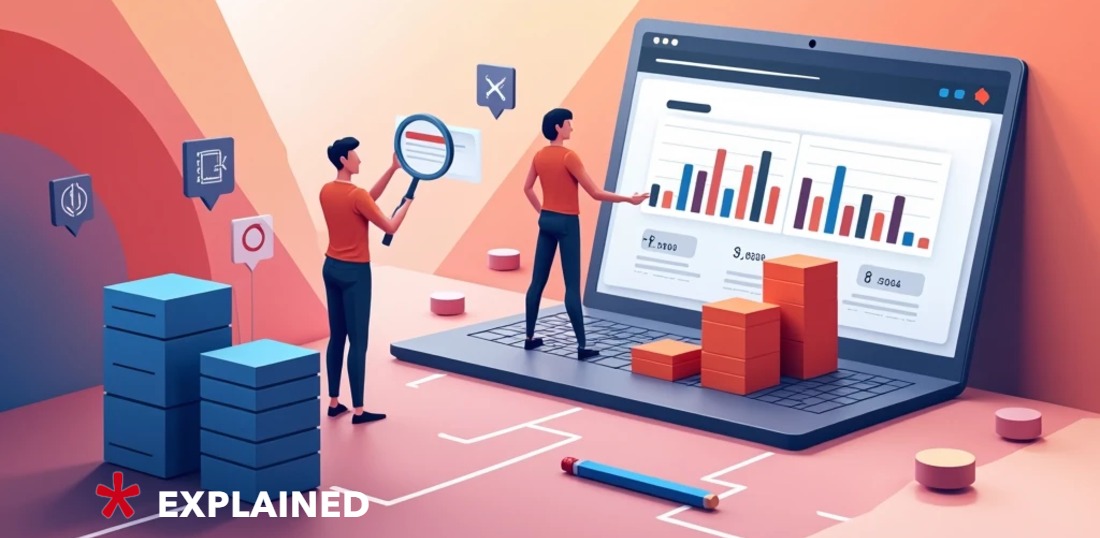Global trends from WAN-IFRA: priorities for publishers in 2016
WAN-IFRA prepared in-depth research among digital executives around the world where they will focus their digital strategies this year to sum up insights into digital trends globally. We are publishing full list of results, direct speach below
Austria
Alexis Johann, Managing Director, styria digital one
- Video: We face a huge demand for digital video consumption, and we believe future storytelling needs to feature video. And there is a lot of money in the market. Still, there is no easy win. New storytelling formats are needed, and it is a time of experimentation for newsrooms to find the right approach. At styria digital one, we’ve started a project where we take our best-performing online stories and tell them (also) via video. The aim is to have a very short delay between news breaking and getting the video online. We want to reduce the time from 2-3 hours to half an hour maximum.
- Converting social visitors to styria ‘loyalists’: Facebook has been a source for our mobile traffic during the past two years. The social web is our most important source for new users. The challenge is to have attractive offers that convinces users to log in to our portals and apps. With that we can create a better individual user experience, start loyalty programmes and create smarter advertising. We have already introduced loyalty programmes on several portals, increasing traffic significantly, and making us less dependent on Google. And, it has been a starting point for e-commerce. With big data technology, we can now offer interesting audience segments. Still, we need far more users to log in. Smart apps are the best triggers for that.
- Be the go-to partner for digital advertising: We see a fragmentation of online advertising: content marketing, native advertising, performance ads, programmatic… There are very few players that can combine these technologies and methods for advertisers, as different skills are needed: storytelling, ad technology, big data analyses, programming, creativity, industry know-how. We think that traditional media houses are in a solid position to translate: adapting new technology and combining their traditional skills in the field of content, user experience and long-term relationships with advertisers, into actually thriving here. Traditional publishers are perceived as reliable, transparent and long-term oriented. This gives them a competitive advantage in times where advertising is facing increasing resistance, fraud and a lack of creativity.
Bangladesh
Matiur Rahman, Editor, Prothom Alo
- Audience relevance: The Facebook and Google battle is intensifying over the future of mobile and the discovery of content, therefore it’s a challenge for Prothom Alo Digital to remain relevant to our current audience and those discovering our content via popular digital channels.
- Messaging apps: They will continue to drive the next phase of the social revolution. We will be working closely with all messaging apps relevant to our readers globally to help them find our content where they spend their time.
- Matching mobile speed: Mobile browsing speed is now faster in Bangladesh, thanks to initiatives by telcoms and other ISPs. Now it’s on us to serve the content that can be enjoyed by our users with better connectivity – like high-definition video news or live event coverage.
- Leveraging data: There is a large amount of data that we get from our websites and users; for us it’s the highest priority in 2016: to improve the use of that data in the newsroom and to serve content based on what our vast audience, from more than 200 coutnries, wants.
Brazil
Andiara Petterle, Head of Newspapers and Digital, Grupo RBS
- Boosting digital subscriptions: Acquiring new “digital-only” subscribers is one of our main goals for 2016. Like other major newspapers across the world, we believe digital paid content is the future of newspapers. Our strategy is to offer a seamless experience through the different screens and exclusive content for digital subscribers. We will be launching new web and mobile platforms for Zero Hora in 2016 as well as new digital products. As part of the experience, we will increase our focus on our “members-only club” with new digital promotions and benefits for subscribers.
- Mobile-first newsroom: One of the greatest challenges of 2016 is to rebuild our newsroom processes and model to really think about and produce digital content for mobile-first. Over 45% of our online readers reach us through mobile. It will be 70% within a few years. This is a reality worldwide. This transformation requires investment in CMS, data platforms and digital talent for the newsroom.
- Rethinking digital distribution and the rise of ePaper: We are betting on an innovative distribution model offering an exclusive customised tablet to deliver two daily digital editions (ePaper) of Zero Hora – besides the online news feed on web and app. This is an offering for the traditional print reader who prefers the ePaper instead of website editions. The multimedia interactive ePaper will be a different product in our portfolio for both readers and advertisers. The initiative requires investments in big data, customer knowledge platforms and UX.
Canada
Greg Doufas, Chief Digital Officer, The Globe and Mail
- Integrating and evolving mobile user experience: From experience to content and storytelling, how will we develop more robust experiences for our audiences, including integration points with external distribution platforms so that we are proactively managing our relationships with our readers with continuity.
- Innovation: Storytelling (analytics, personalisation, VR, data, visualisation). How will we develop new capabilities being mindful of our challenges above; owning new platforms to engage our audience and stay ahead of the curve.
- Experimentation: Testing and rapid prototyping so that we are making our audience a key partner in how we determine the features and experiences we will offer. The art of really knowing things.
Hong Kong
Yumiko Ono, Asia Digital Editor, The Wall Street Journal
- Deliver WSJ news content to our readers through social media and messaging platforms relevant to where they live, and reach new audiences who could eventually become loyal readers: We’ve attracted more than 2 million followers online in just over a year, mostly in Asia, and we’ve just started providing content on Snapchat in the U.S. this month. As we continue to evolve our offering, a big priority will be in tailoring the content we put out for each platform.
- Optimise our engaging digital storytelling, including mobile-friendly videos, immersives and interactives: We published a series of virtual reality and 360 videos at the end of last year on a variety of stories, including a multimedia series on the sweeping demographic changes the world will confront by year 2050. One video took readers inside a massive chicken farm in Thailand that gave a glimpse of the future of food production. We created animation videos to explain the complex flow of money in Malaysia’s 1MDB scandal – a significant story we broke and have been following closely. We want to keep pushing to find creative ways of telling the story and helping our audience connect with our authoritative journalism.
- Innovate and optimise our digital offerings to deliver our content in the way we know audiences will consume it: We are constantly looking at ways to engage readers and attract subscribers by utilising reader data to support product innovation. A great example of this is our recently launched mobile app called WSJ City that’s aimed specifically at people in the City of London. This follows our popular What’s News app, which is aimed at subscribers interested in getting a quick summary of the latest business and financial news, and has already gotten 80,000 downloads since its launch in September.
India
Mariam M. Mathew, Chief Operating Officer, Manorama Online, Malayala Manorama
Our foremost priority is to meet the fast-changing needs of the readers and to create a better user experience for them by curating content and presenting it in interesting formats.
- Mobile first is the business approach that we are focusing on in 2016. Mobile is fast becoming a priority in the modern market and to ignore or shy away from the reality is like marketing suicide to any company that hopes to grow. Smartphones provide the opportunity for us to provide more local content and to lift engagement. Providing a responsive website was the first step that we implemented and now we need to take a few more steps forward and take advantage of the technology embedded in every smartphone. We’re right now a mobile society. More than 50% of our unique users are accessing the site through mobile phones (in some sub-sites it’s up to 80%) – an obvious reason why mobile matters to us.
- Video content is one among a few areas we are aggressively pursuing as it’s shaping up as a medium of choice to tell the tale. There is so much innovation that is happening in the video space. Capturing and capitalising on the present trend will help in bringing more business and also help in establishing a genuine emotional connection between the viewer and us.
- Smart advertising: It’s the right of the reader to have authentic and seamless experience when browsing through our sites, for that we also need to reduce the advertising clutter in the webpage. Brands have to be an organic part of our content ecosystem and there has to be space for high-quality advertisement through targeting and personalization.
Ashok Venkatramani, CEO, ABP News Network
- Building the brand: As a traditional news publisher in the TV/print space, our brand equity has been built through the credibility of our news product over the years. It’s important that this equity is also built in the digital space as the audience is very different and the way the audience consumes the product is also very different. Building this emotional tie with the digital audience is both a huge challenge and also a priority.
- Consumer acquisition: The digital space for news is rapidly growing as the penetration of smartphones and Internet grows in India. Acquiring new consumers and connecting them onto our platform is a top priority as it’s a very competitive space and there will be a scramble amongst a host of TV and print news brands.
- Monetisation models: These are evolving constantly, and in some of the newer space like social media, the models are still unclear. So building monetisation models and revenue streams is a top priority.
Italy
Massimo Russo, Co-Editor in Chief, La Stampa
- Platform journalism: Newspapers have to find better ways to distribute their journalism outside their sites – on search engines, social networks, proprietary operative systems and devices and on video OTTs, preserving branding and monetisation while growing their traffic. At the same time, they have to avoid being cut off from the relationship with their user base.
- Ad blocking: Ad blockers will keep growing. The only way to defeat them is to establish acceptable ad standards with a joint industry effort. We should try to adopt the user perspective.
- Apps: Squeezed between newspaper replicas and mobile sites, news applications are becoming less and less relevant, and fail to reach monetisation goals. What are the core qualities of an app? How can we make it more compelling and exploit the content being produced by the newsroom?
Bottomline: The growth in digital advertising in 2016 is going to be intercepted mainly by Facebook and Google. Display and premium ads for newspaper sites will be in a declining (or at best in a flat) trend. How can we build a sustainable ecosystem for quality journalism (news, analysis, opinions that require significant investments to be produced)? Micropayments, subscriptions, data, native, membership, events, education, user profiling: what will be the right mix?
Singapore
Eugene Leow, Digital Editor, The Straits Times
- Increase reach and revenue: Print revenue is still extremely dominant for the ST (although in decline). But it’s undeniable that our growth story will come from digital. We’ve made tremendous progress over the past couple of years but we need to keep the momentum going. We are facing more competition than ever, in an economic environment that is expected to be stagnant.
Finding and retaining digital talent: We need a handful of specialists or what I call a digital “crack team” – specialists in analytics, interactive graphics, social media, etc. Finding, attracting and retaining talent is an enormous challenge.
Employ new technologies: We’re still pretty much a traditional print company but we’re competing with “tech” companies. I also believe that producing content can only take you so far. But technology-driven publishing/distribution will help us reach new frontiers.
South Africa
Lisa MacLeod, Head of Digital, Times Media Group
- Products (mobile apps and mobi sites): According to Quartz Africa, 2016 is the year when mobile smartphone shipments in Africa outnumber feature phones for the first time. This represents an incredible opportunity for publishers and service providers as the Internet is suddenly in the reach of exponentially more consumers than ever before, and that number will only increase. This means that all apps and mobile products have to be top-notch, optimised for speed and slick user experience, and importantly, light on data (costs) which is still so expensive compared to other countries. The days of focusing heavily on websites are over, and as I’ve said before, desktop is fast becoming the new print.
- Platform publishing: The rise and rise of the social media behemoths mean that consumers are increasingly getting a feed of the news and entertainment they like from their peer groups on Snapchat, Instagram, Twitter, Facebook and WhatsApp. The question for publishers is whether to play against or with the social media giants. My instinct is to go with: The big tech / media companies like The Verge / Vox are now working almost entirely on the platforms and employing specialist teams to meet readers where they are and in the tone and style they like. A lesson for us, because we will head in the same direction.
- Video and multimedia: As data costs decrease and smartphones enter the second-hand market and become more ubiquitous, consumers will increasingly choose to consume their stories in a more digital-friendly – and thus visual – way. Video and multimedia innovation is very much in its infancy in SA: but the consumption trends only point upwards, and we have to be on board.
I want to include ad blocking as my fourth – this is going to be a big and burning issue for publishers, but we probably have a little bit of grace as we usually feel the fallout a bit later than the rest of the world.
Spain
Ismael Nafria Mitjans, Director of Digital Innovation, Grupo Godó
The main goals with the following and other actions are: Increase our digital ad revenues and digital subscriptions.
- Improve our global content offering: with a special focus on new and improved vertical channels and a better use of the social networks.
- Use of big data to improve our operations: content offering, social networks content distribution, better advertising (more friendly formats, personalised ads…).
- Mobility: improve our offer for mobile users with the launch of new products.
Sri Lanka
Udesh Gunatunga, Director Digital Media, Wijeya Newspapers, Sri Lanka
- Branded content: Introduce and popularise native advertising and content marketing to clients and ad agencies as an alternative to banner advertising. This would keep the websites cleaner and enhance the reader experience.
- Personalisation/analytics: Improve on audience targeting efforts, data collection and analysing efforts.
- Video vantage: With the improvements in Internet connectivity in the country, increased focus on video content on web and mobile, while also coming up with more monetisation options on video content.
USA
Julia Beizer, Director of Product, The Washington Post
- Experimenting for engagement: The Post saw record numbers of readers visit us in 2015. In 2016, we’ll continue working to deepen the relationship with those readers, giving them reason to come back more often, stay a little longer, learn more. We’ll experiment with new editorial products and user experiences – a-b testing rapidly, pivoting quickly – to find recipes that work.
- Growing our reach: Reaching new audiences across the globe is of vital interest to The Post. The distributed platforms like Facebook Instant Articles, Apple News and the like offer us a great opportunity to see if we can find new audiences for Post journalism.
- Looking for new ways to tell stories: Virtual reality, augmented reality, 360 video, data-driven interactives, the web continues to offer us new, rich ways to inform and delight our audiences. As we gear up for an American election season, we’ll search for the best tools to tell the stories we cover.
Chris Lee, President, Deseret Digital Media
- It’s all mobile: Keep building a mobile-ready business model, i.e. non-display revenue sources from mobile products: feeds, lists, native. Maintain and grow mobile expertise in product management, design, software development, and sales.
- Use the data we have: Sell with it. Build audience with it. We – first party – know a lot about the audience that will make our ad inventory more valuable and our products more engaging.
- We are all socialists: The audience is on Facebook. Understand it, embrace it, optimise it. Create authentic engagement in Facebook in areas where we can capitalise on our unique content strengths (and sell sponsorships).
Derek May, Executive Vice President, Morris Publishing Group
- Quadruple our digital-only sales force: We need more people focused completely on digital sales. Some will be additional positions and others will be conversions from multimedia sales. Digital-only sales reps have greater skill than multimedia reps in selling complex digital campaigns, and they do not have the distraction of selling print. Building a digital sales team cannot happen overnight. We expect it to take a full year to go from less than 10% to more than 30% of our total sales force.
- Build the digital sales pipeline: Late last year, we recognised that we had far too few prospects in our digital sales funnel to achieve our goals. At that time, we had just over $1 million in prospective closes in our CRM system. Based on our closing ratio and average value per close, we set quarterly goals that ramp up to $12.5 million in our digital sales funnel by the end of 2016. Progress is tracked on a daily basis, and we are testing different incentive programs for achieving the targets.
- Install central proposal desks at each of our metro markets: This will shift the work of developing great proposals to specialists who will carefully match the client’s needs to the appropriate products and solutions. In 2015, two of our markets led the way and saw much higher digital performance than markets without proposal desks.




